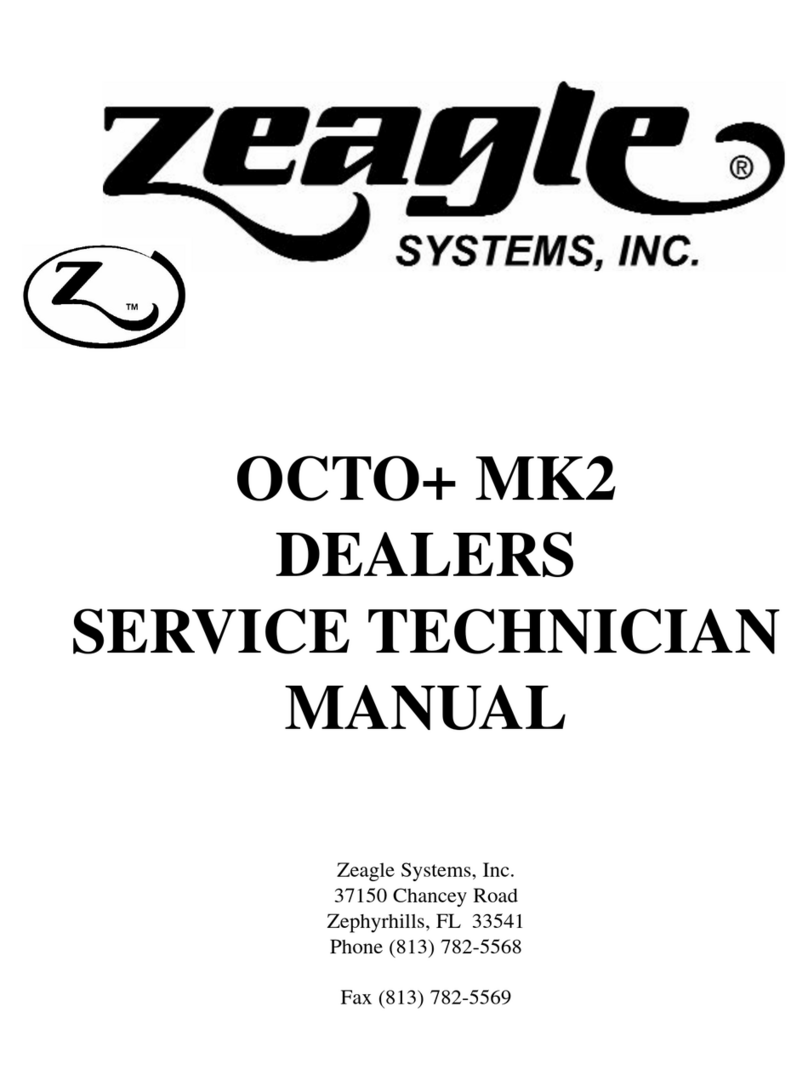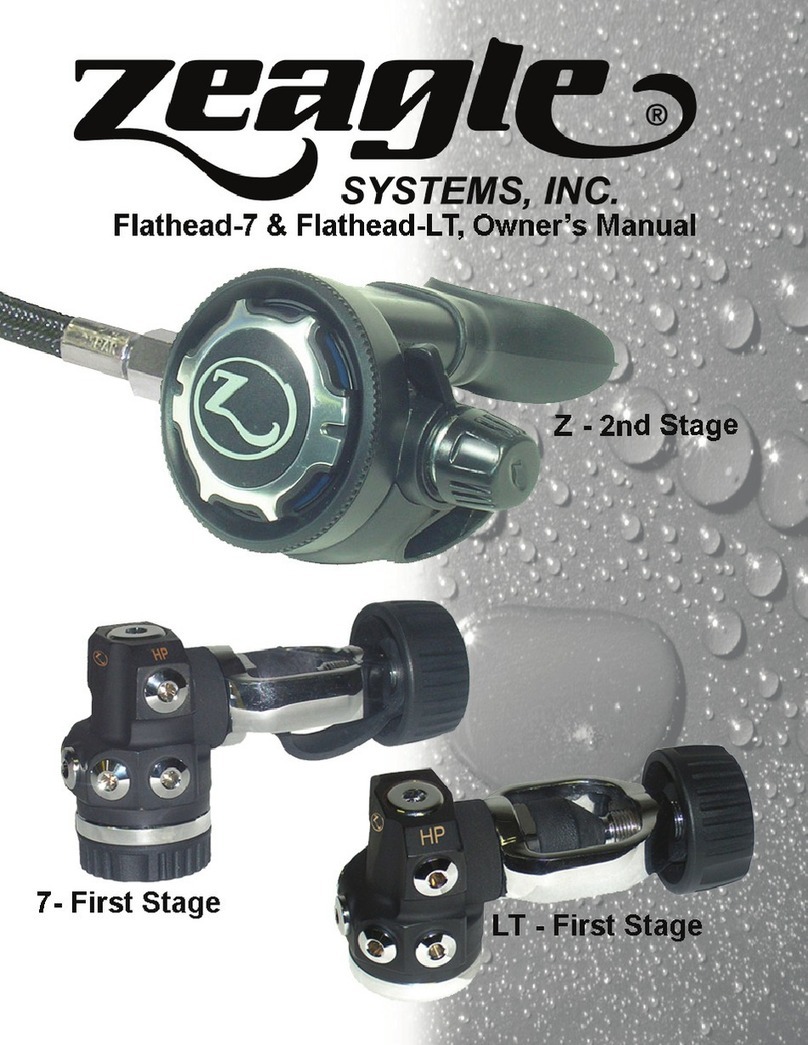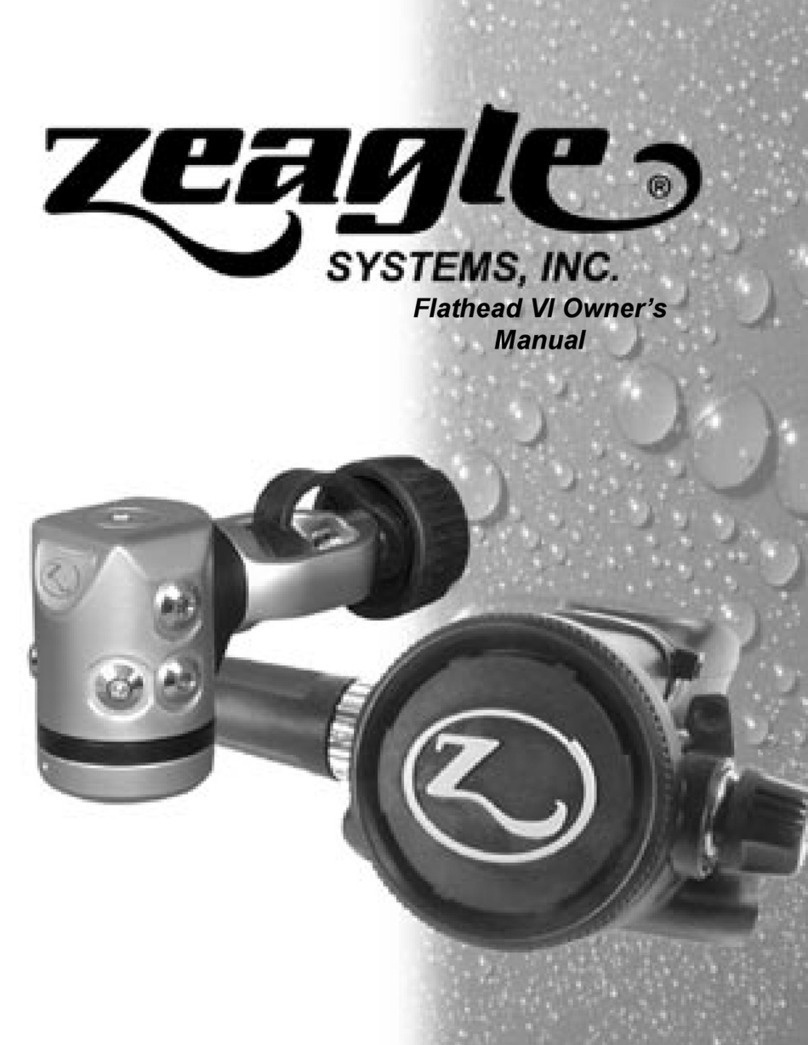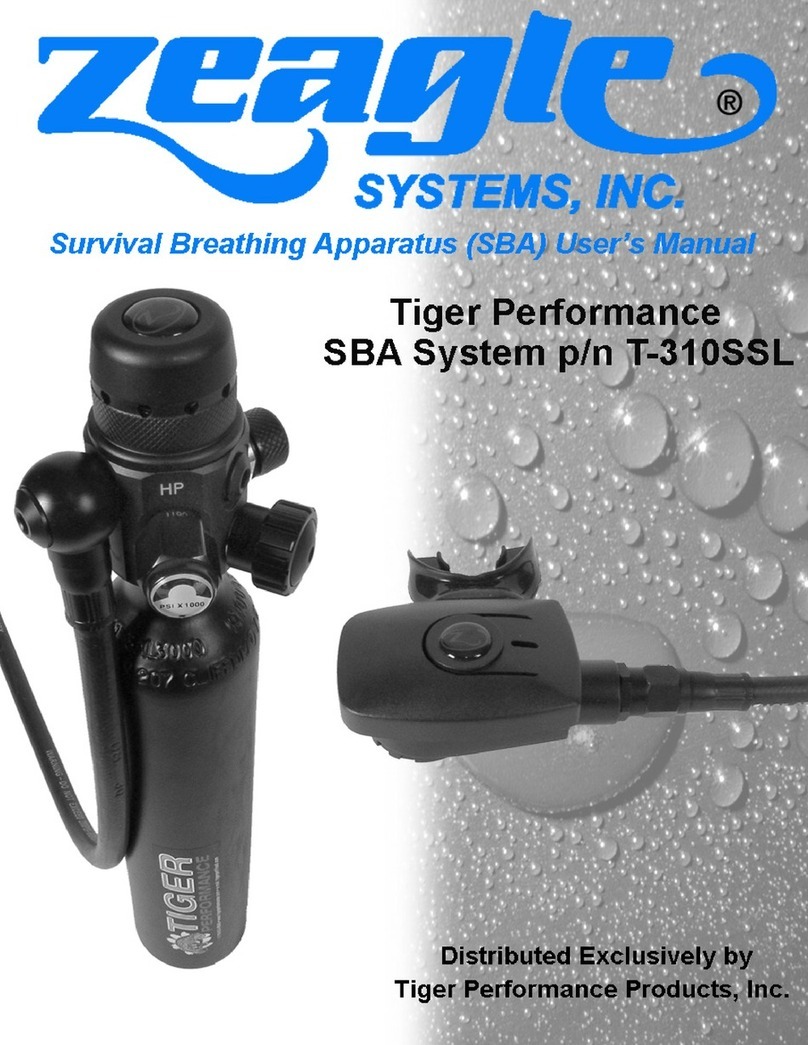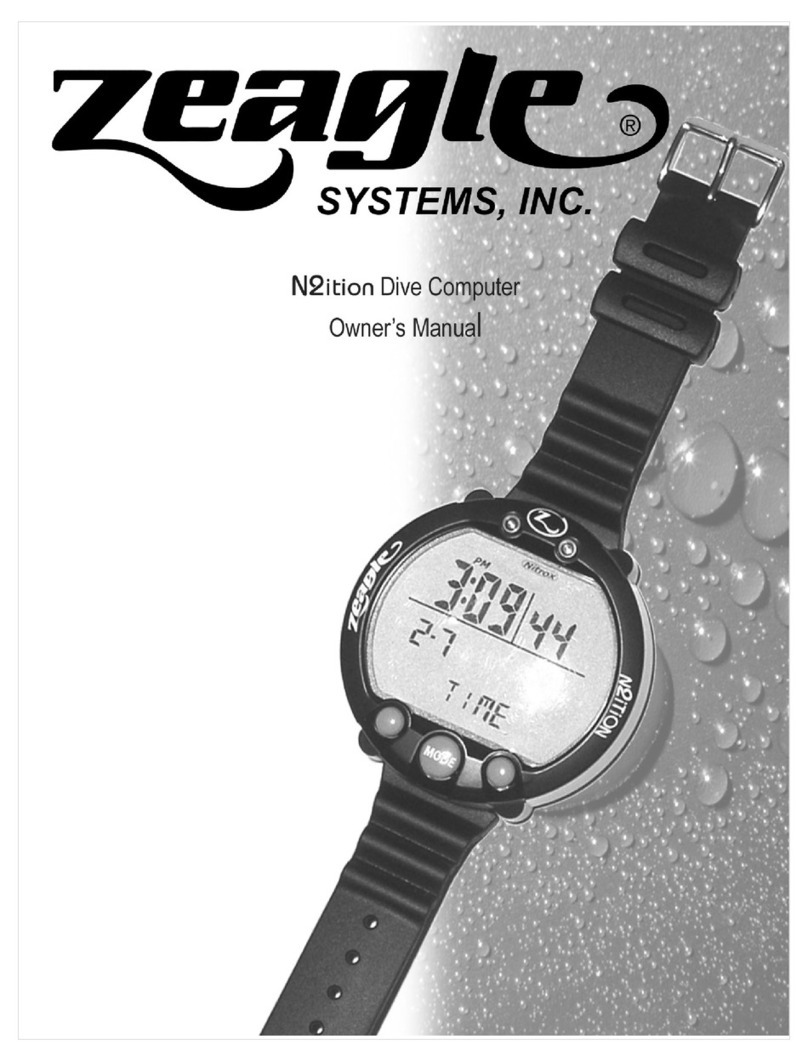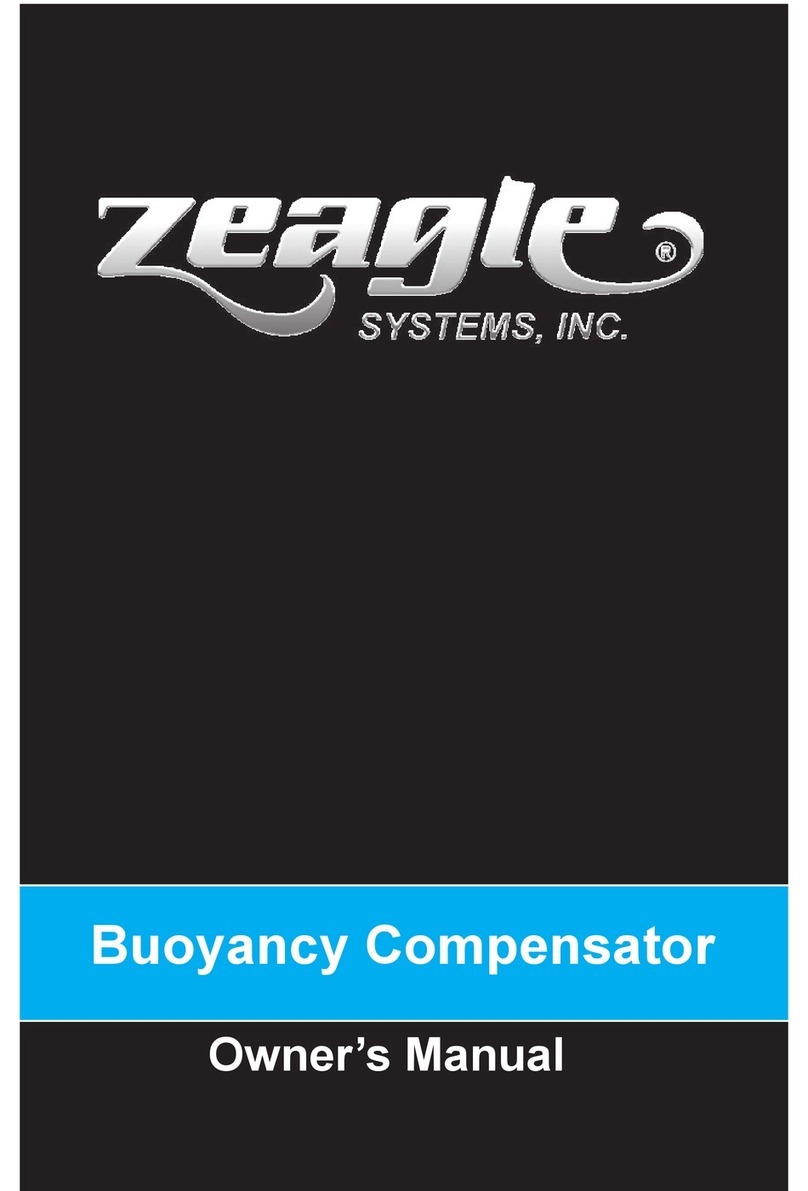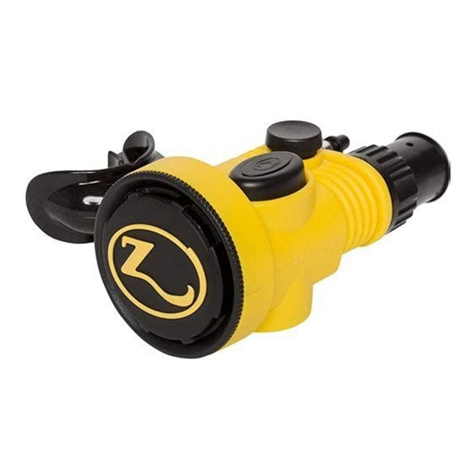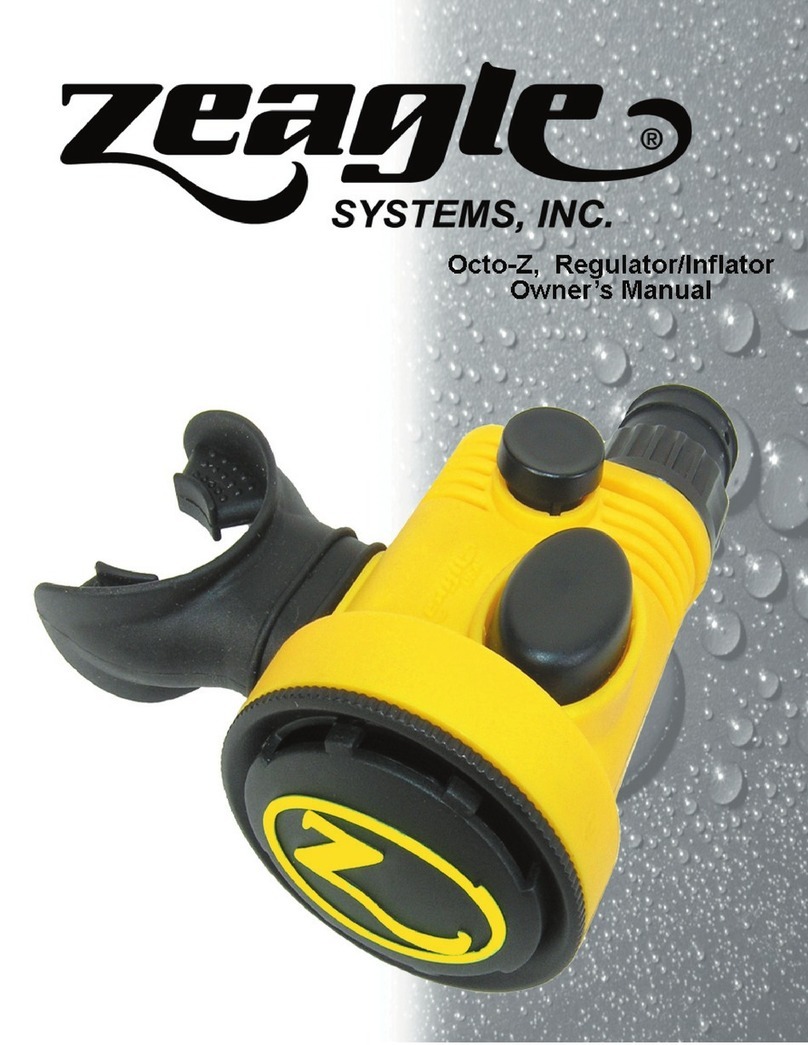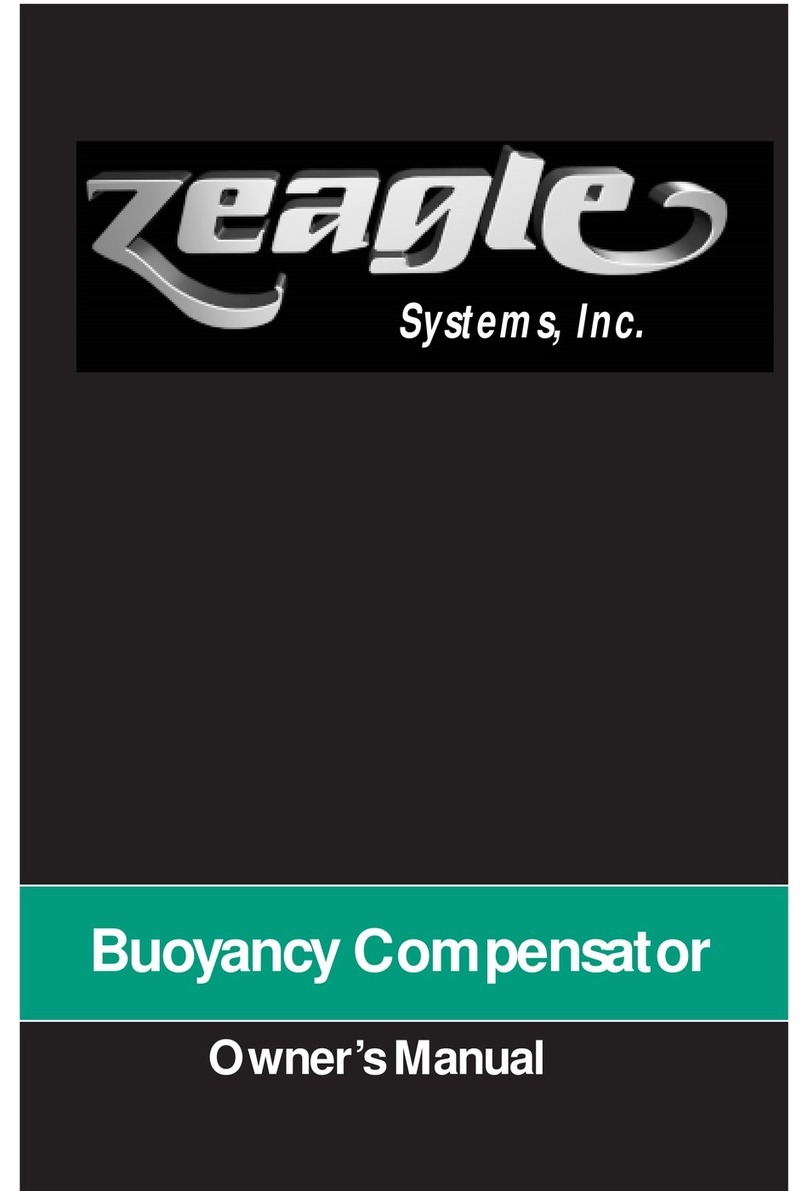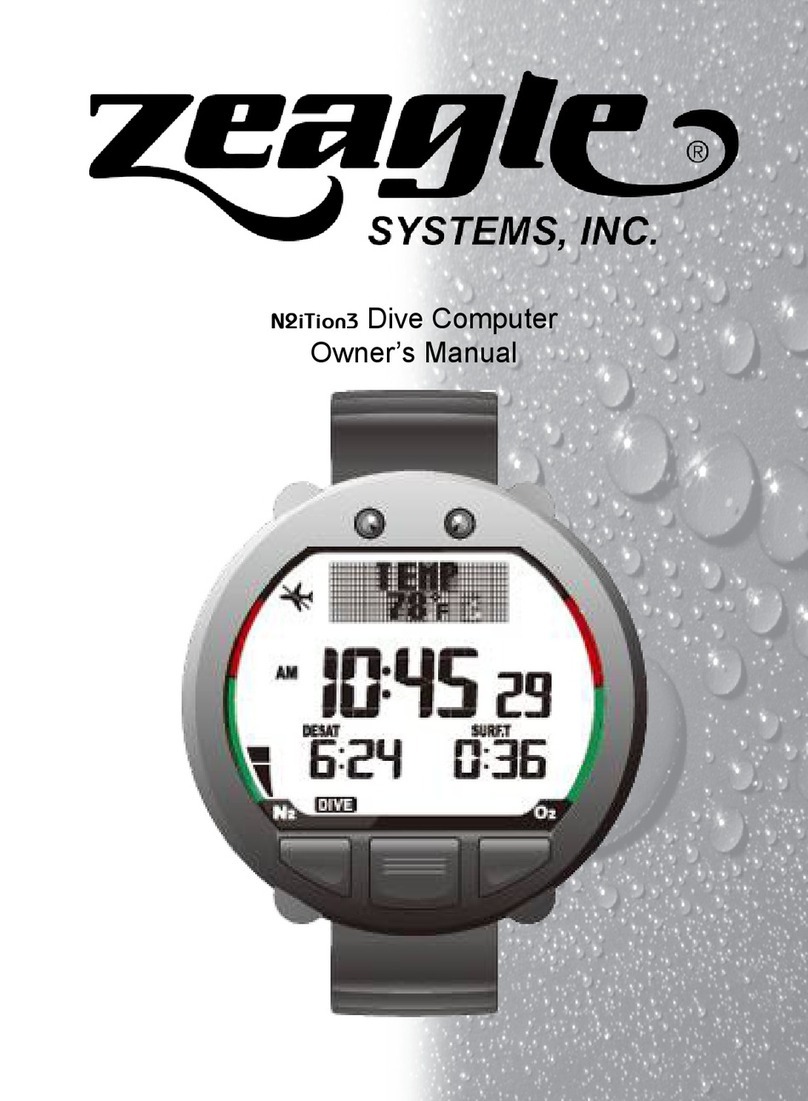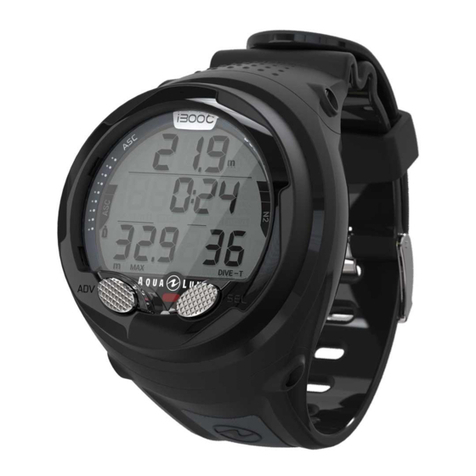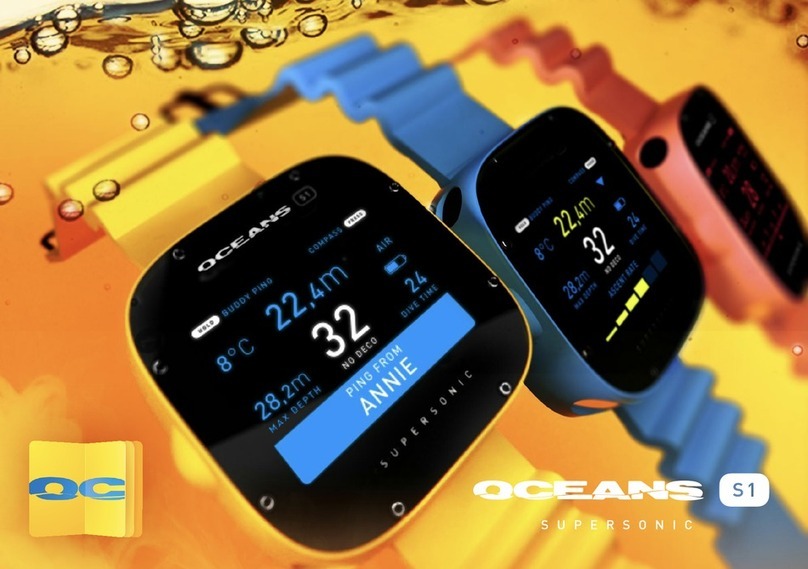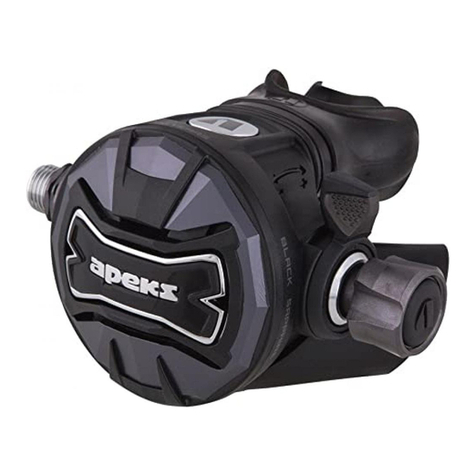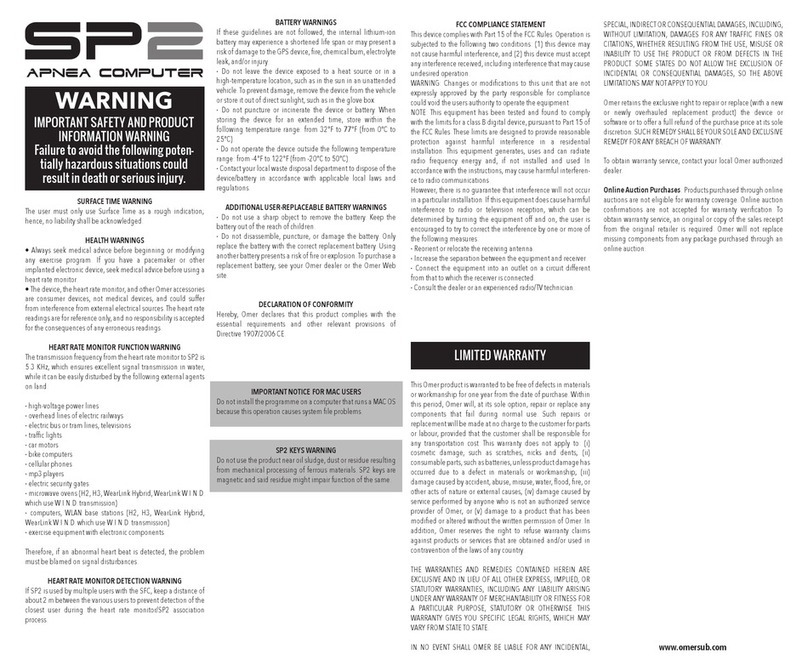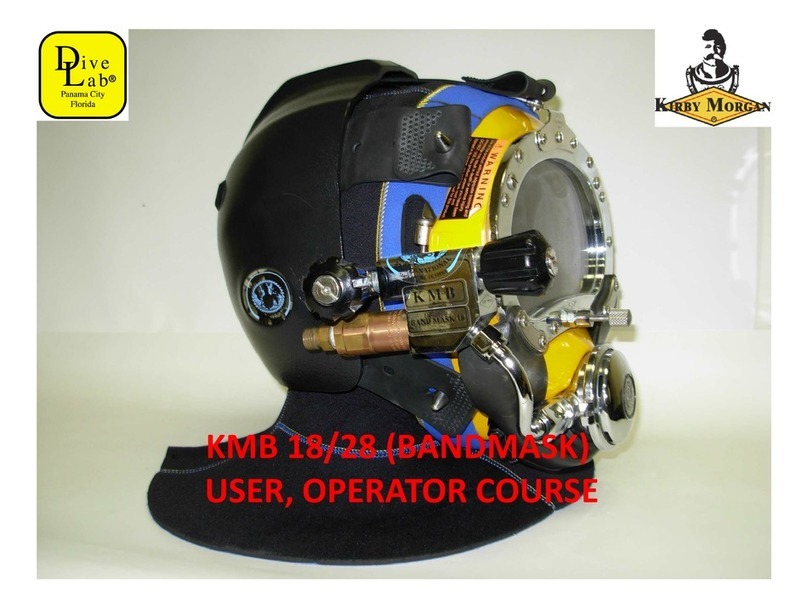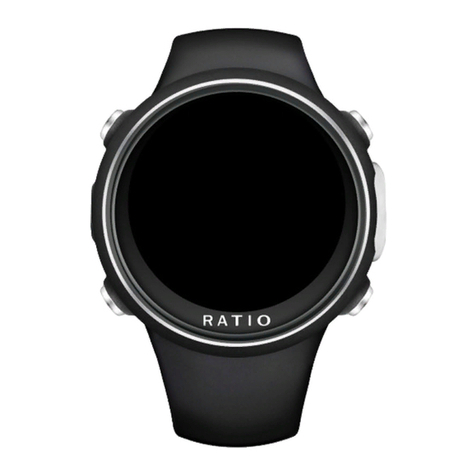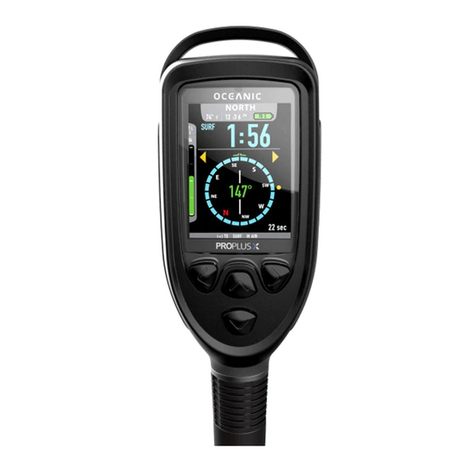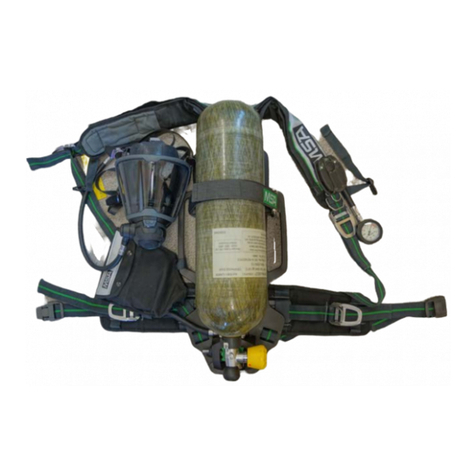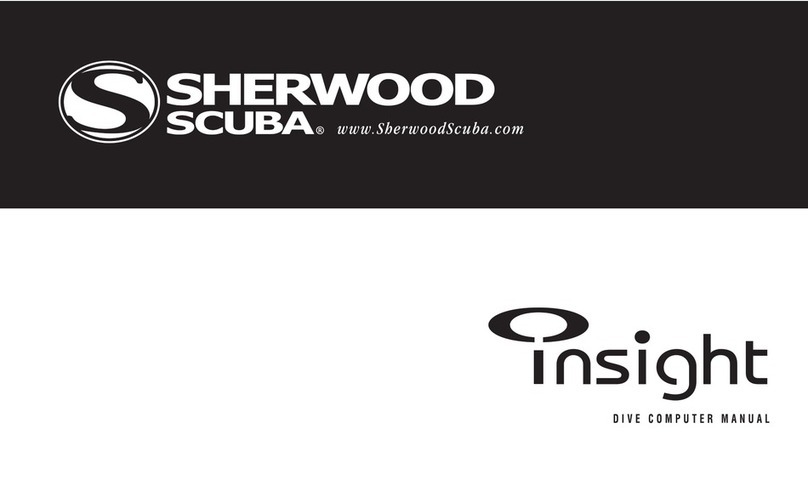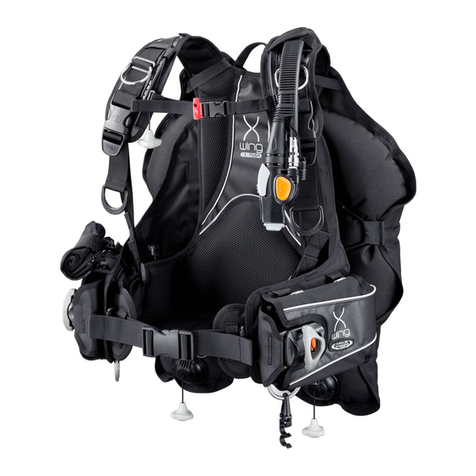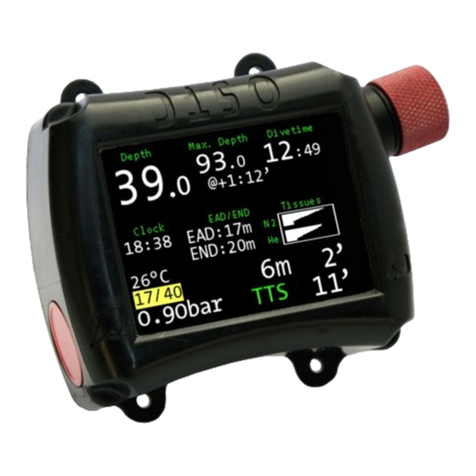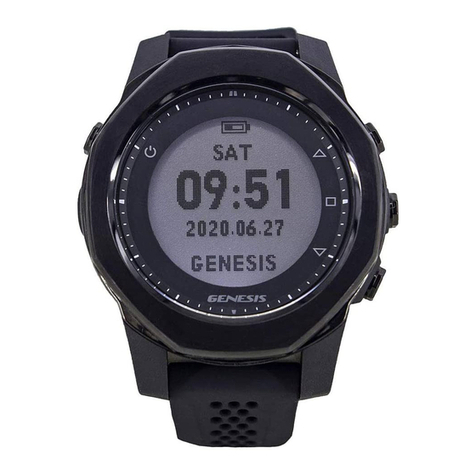
Limited Lifetime Warranty To The Original Owner
1. Your regulator is guaranteed against defects in materials and work-
manship. This guarantee does not cover normal wear, or damage from
accident, abuse, neglect, alterations, improper usage, or failure to follow
reasonable care and maintenance as outlined in this manual. Under this
limited warranty, Zeagle will either repair or replace, at its sole option, any
original equipment or parts that fail to perform as intended. Shipping and
Labor charges are not included and must be paid by you. This Limited
Lifetime Warranty excludes filters, hoses, O-rings, diaphragms and
mouthpieces, which are warranted for two years from the regulator’s date
of purchase. The second stage serial number is stamped on the mouth-
piece tube. To read this serial number you must fold back the flexible
silicone mouthpiece to expose the numbers. Each serial number consists
of a pre-fix letter followed by six numbers.
2. For proof of original ownership, you must save the original purchase
receipt. It is your record of when and where the regulator was purchased.
It also lets you know when your annual service should be performed. If
your bring your regulator for service at a Zeagle dealer who has not done
business with you before, they will ask you for receipts to show you are the
original owner and you have had the regulator serviced annually.
3. To keep the original-owner Limited Lifetime Warranty in effect, you
must have your regulator inspected and serviced annually, within 30
days before or after the anniversary of the purchase date. Failure to do
so will invalidate your warranty. This servicing must be performed by an
authorized Zeagle dealer. Save the receipts from this servicing for your
records.
To register your regulator purchase with Zeagle, fill out and return your
product registration card or go to www.zeagle.com to register your regula-
tor within 30 days of purchase.
3

